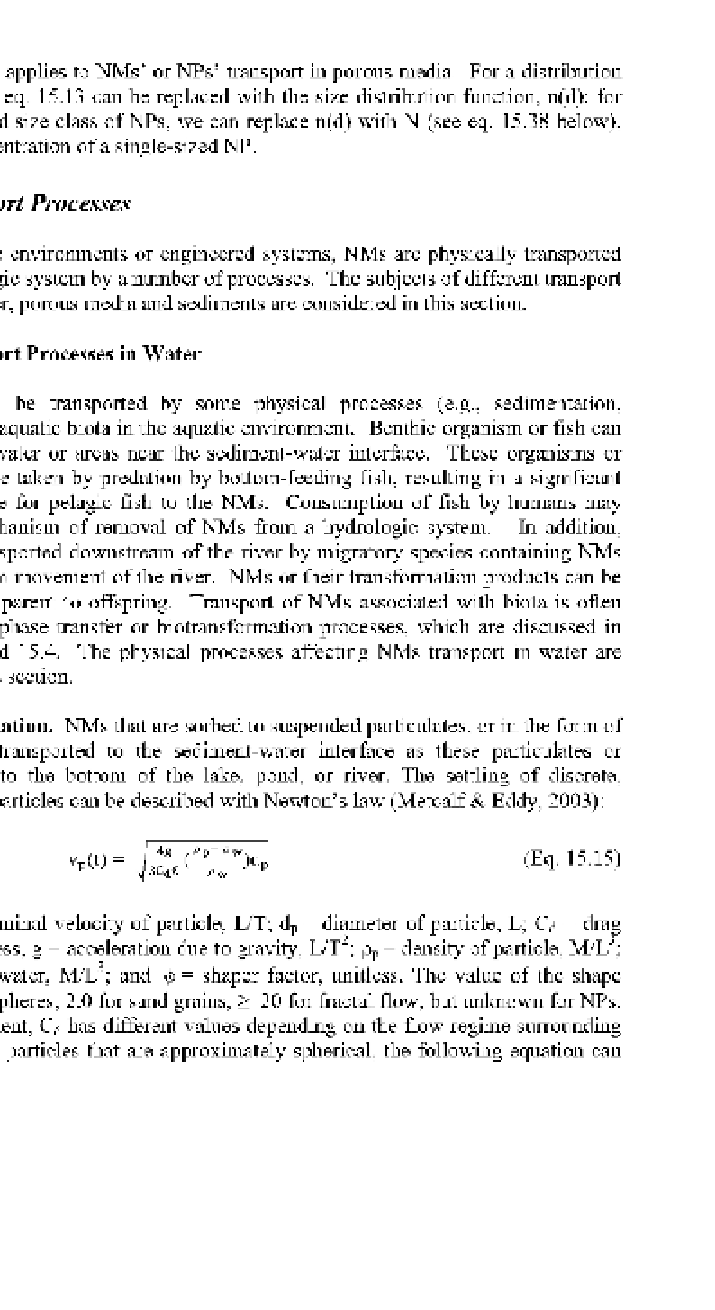Environmental Engineering Reference
In-Depth Information
Eq. 15.13 applies to NMs' or NPs' transport in porous media. For a distribution
of NP sizes, c in eq. 15.13 can be replaced with the size distribution function, n(d); for
only one type and size class of NPs, we can replace n(d) with N (see eq. 15.38 below),
the number concentration of a single-sized NP.
15.2.2 Transport Processes
In aquatic environments or engineered systems, NMs are physically transported
within a hydrologic system by a number of processes. The subjects of different transport
processes in water, porous media and sediments are considered in this section.
15.2.2.1 Transport Processes in Water
NMs can be transported by some physical processes (e.g., sedimentation,
diffusion) or via aquatic biota in the aquatic environment. Benthic organism or fish can
uptake NMs in water or areas near the sediment-water interface. These organisms or
small fish may be taken by predation by bottom-feeding fish, resulting in a significant
route of exposure for pelagic fish to the NMs. Consumption of fish by humans may
constitute a mechanism of removal of NMs from a hydrologic system. In addition,
NMs can be transported downstream of the river by migratory species containing NMs
or by downstream movement of the river. NMs or their transformation products can be
transferred from parent to offspring. Transport of NMs associated with biota is often
linked with interphase transfer or biotransformation processes, which are discussed in
Sections 15.3 and 15.4. The physical processes affecting NMs transport in water are
introduced in this section.
Sedimentation.
NMs that are sorbed to suspended particulates, or in the form of
aggregates, are transported to the sediment-water interface as these particulates or
aggregates sink to the bottom of the lake, pond, or river. The settling of discrete,
nonflocculating particles can be described with Newton's law (Metcalf & Eddy, 2003):
(Eq. 15.15)
where v
p
(t) = terminal velocity of particle, L/T; d
p
= diameter of particle, L; Cd = drag
coefficient, unitless; g = acceleration due to gravity, L/T ; p
p
= density of particle, M/L ;
p
w
= density of water, M/L
3
; and <J> = shaper factor, unitless. The value of the shape
factor is 1.0 for spheres, 2.0 for sand grains, > 20 for fractal flow, but unknown for NPs.
The drag coefficient, Cd has different values depending on the flow regime surrounding
the particle. For particles that are approximately spherical, the following equation can

Search WWH ::

Custom Search